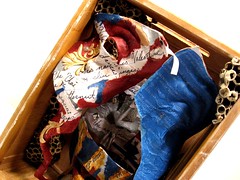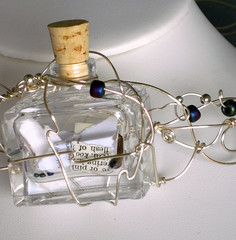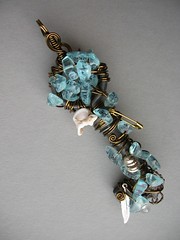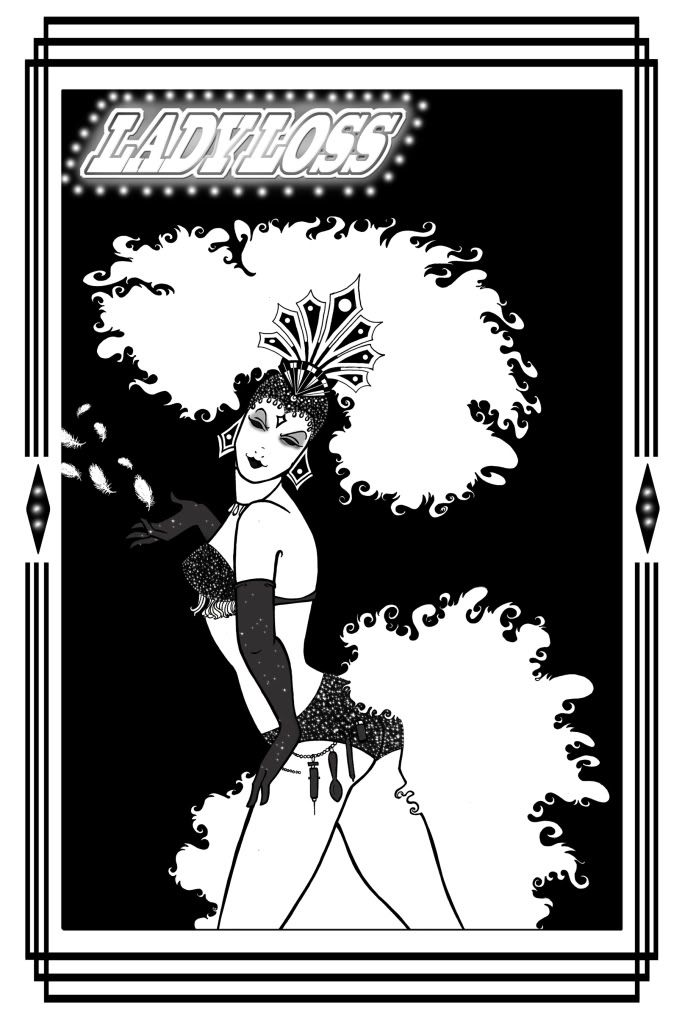
I wrote “Valentines” when I was supposed to be writing something else entirely.
I’d gone to visit my friends at Wyrding Studios, and had intended to finish my short story “Undertow” while I was there. Instead, I ended up curled on their couch capturing “Valentines” as it fell out of my head! Surprise! And I had the excellent good fortune to have this story pop out when Delia Sherman and Christopher Barzak were reading for Interfictions 2 – and the even better fortune of having them like it.

I view much of my writing as interstitial. I feel like genre is as fluid as gender. With Interfictions, one gets to play with that, and I did.
The note that accompanies the story in Interfictions 2:
Epileptics live in a very interstitial state, slipping from world to world with little or no warning. Some seizures induce a sort of religious euphoria. Some are stark, terrifying disconnection. In some, one hears music no one else can hear, or one experiences the scent of lilacs as a physical object.
Temporal lobe epilepsy means, at its best, walking between worlds.

In 2003, I became interstitial, and I’ve been trying to make sense of it ever since – of the electrical cascades in my brain that can send me elsewhere, of the battery of medications that often make things worse, and of the pervasive sense of data loss and the odd things the brain does to patch those holes.
“Valentines†could be an extended seizure state. It could be many-worlds quantum physics. It could be magical realism. It is me, like my protagonist, trying my best to make sense of this in-between world.
Another part of the awesomeness of being in Interfictions 2 was the auction! So many amazing artists created work based on “Valentines”. The pieces pictured above are, in order, by Amanda Leetch, Emily Wagner, and Kythryne Aisling, on whose couch I wrote the story. Pictured below is a piece by Kendra Tornheim. All four used bits of the story in their creations in such different ways. There were also wonderful pieces by Susan Saltzman, Jonaya Kemper, Sara B. Evans, Kristin Ross, and Ilene Winn-Lederer.

I’ve loved being part of the Interfictions family, and hope you’ll check out the Interstitial Arts Foundation!
“Valentines” has been reprinted in Apex Magazine and The Mammoth Book of SF Stories by Women.
—
Reviews:
KingRat says: “The girl in the story has problems with her memory, and it takes her partially out of the real world. She takes notes on everything and files them in an attempt to make sense of reality. Three similar waiters, all with variations on the name Valentine are subjects of her notes. Really good job of imparting a sense of confusion and impermanence. Really identified with her struggles with making sense of the notes in her filing system and a nice connection between the Valentines and when her filing system falls apart.”
Nareshe on LibraryThing says: “I have to put in here special kudos to “Valentinesâ€, by Shira Lipkin, as my favorite story in the collection. This is what I would consider slipstream at its best. It has so many interpretations that it could be read as either speculative fiction or literary fiction, and it’s a lovely accomplishment.”
David Beamer says: “”Valentines” is a marvelous miniature having to do with the author’s possible confusion of three waiters with the same name…or maybe they are different versions of the same waiter. The author mentions in her afterword that she is an epileptic, and that the story is something of a description of how life happens to her. She says she herself “became interstitial” with the onset of her illness, so the story has an added bite of realism amid the confusion. ”
Sarah Culver at VenusZine says:”Shira Lipkin’s “Valentines†is not fiction or biography, but a series of loops building a powerful picture of an epileptic’s inner life…The interstitial writer’s honest pursuit of a story and disregard of form catches us off guard. These stories are disconcerting and real.”
Charles Tan at SF Signal says: “Through repetition and atmosphere, the author builds each scene, layering it with multiple facets. Even the numbering has purpose. It’s an enjoyable slice of life, and the length feels just right for a flash fiction piece.”
Steven Wingate at The Short Review says: “Cecil Castellucci’s The Long and Short of Long-Term Memory, William Alexander’s After Verona, and Shira Lipkin’s Valentines also stick out for their subtle playfulness and for the way they occupy the space between speculative and mainstream fiction—not worrying about the bridge that links them, but clearing characters who dwell on that bridge and working from there outward.”
Nina Allan says, in part: “I love the style of ‘Valentines’, the nouveau-romanesque obsession with quotidian detail, the narrator caught in the act of describing what they are doing even as they are doing it. If the story is a metaphor for the act of writing itself, it is a good one. I envy the deceptively simple outlines, the finely sanded surfaces of this piece. I wanted to stay with the narrator. I could have carried on listening to them for many pages more.”






